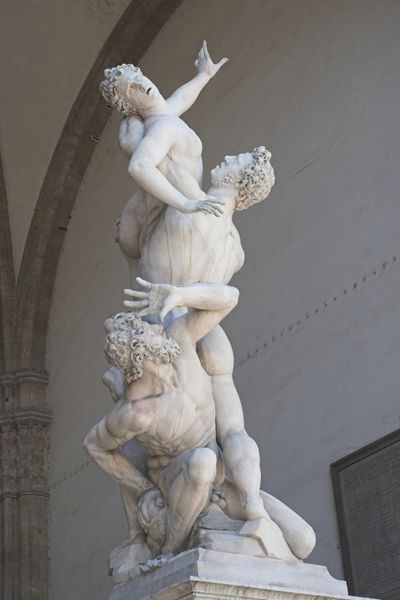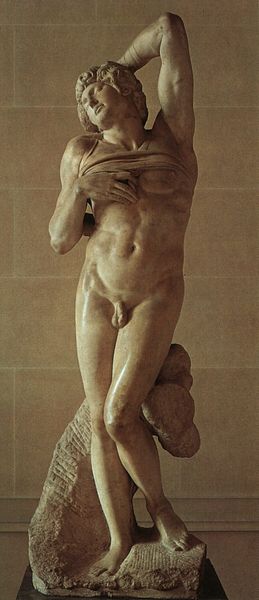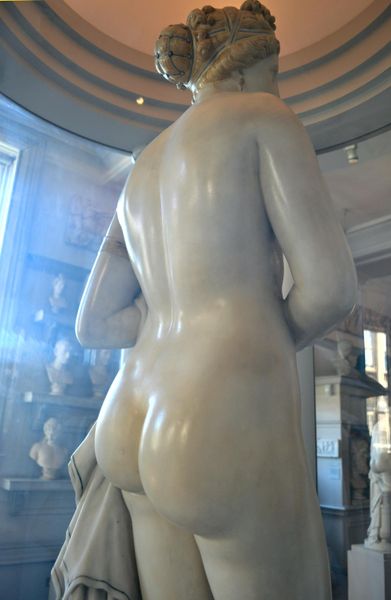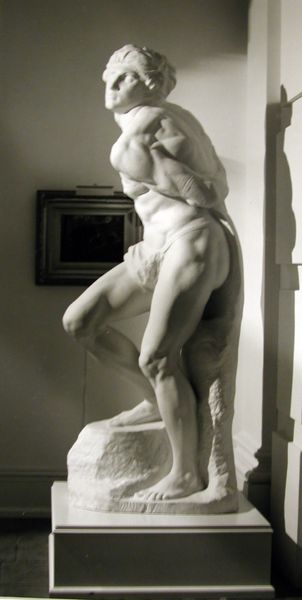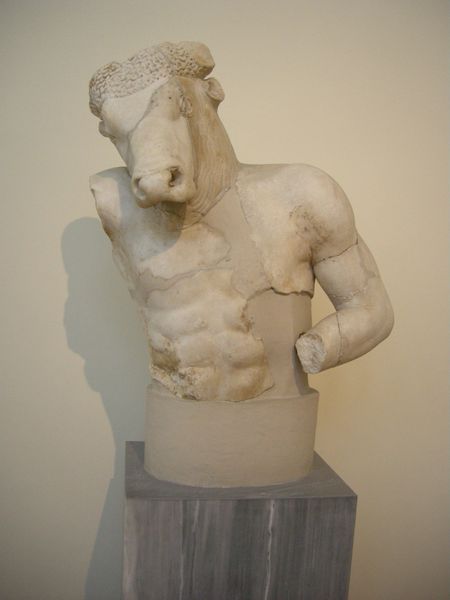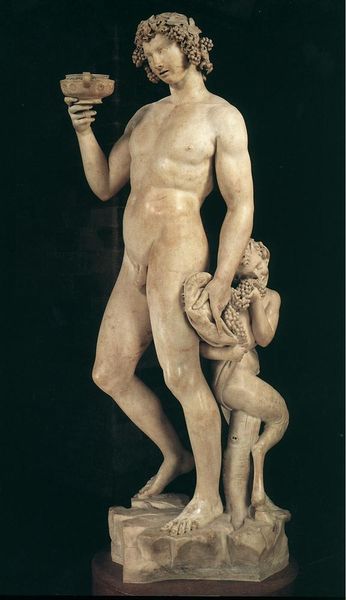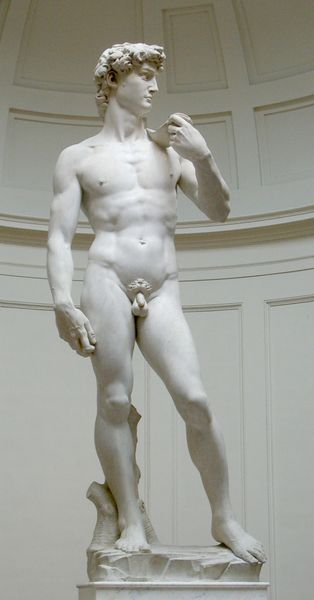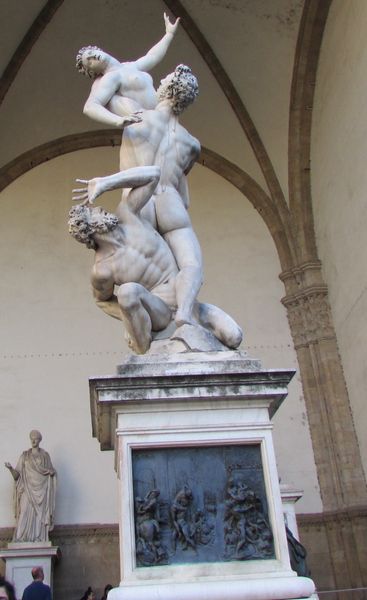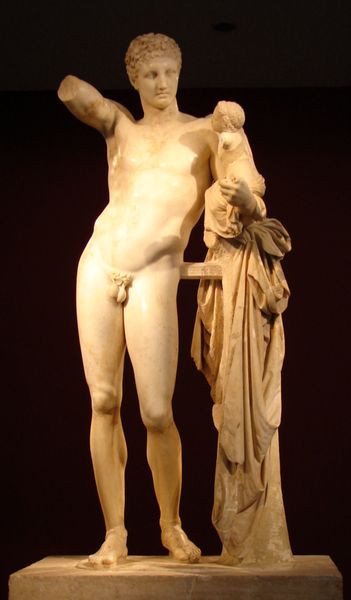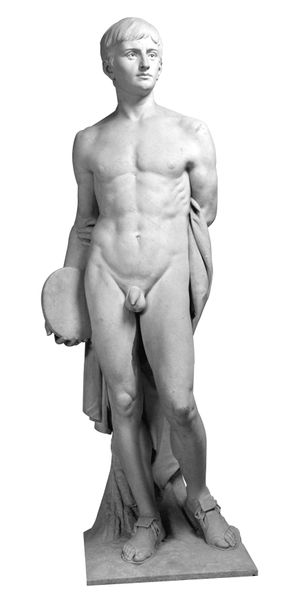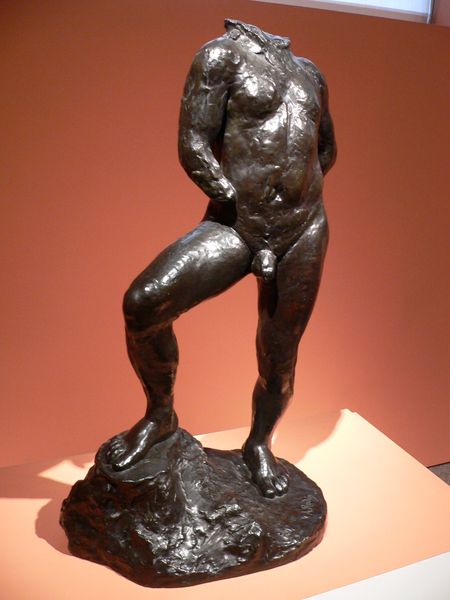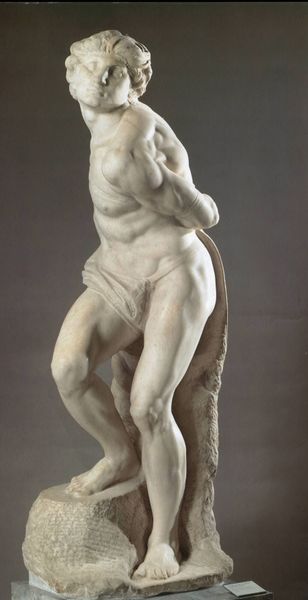
sculpture, marble
#
sculpture
#
greek-and-roman-art
#
figuration
#
ancient-mediterranean
#
sculpture
#
marble
#
statue
Copyright: Public domain
Editor: Here we have the Belvedere Torso by Apollonius of Athens, crafted around 200 BC from marble. What strikes me immediately is the incredible detail despite its fragmentary state – the muscles still convey a powerful sense of movement, even though we're missing the head and limbs. What do you see when you look at this piece? Curator: What resonates most with me is the enduring symbol of the ideal human form. The absence of the head and limbs, paradoxically, amplifies the emotional weight of the torso itself. The rippling musculature evokes ideas of heroic strength and physical perfection, values deeply embedded in ancient Greek culture. Editor: Do you think the fact that it's just a fragment alters how we interpret that symbolism at all? Curator: Intriguingly, yes. The incompleteness opens it up to broader interpretations. Is it a symbol of broken ideals, the ravages of time, or perhaps even the imperfect nature of humanity striving for perfection? Consider the story it doesn't tell – where are the arms reaching? What expression graced that now-missing face? It prompts us to project our own cultural anxieties and aspirations onto it. Think of the Renaissance artists who saw in it the absolute standard of anatomical knowledge. What cultural memory is at play when a viewer encounters this? Editor: So, in a way, its incompleteness makes it timeless? Curator: Precisely! It becomes a vessel for collective cultural memory. We see echoes of past interpretations layered onto our present understanding, creating a powerful, multi-layered symbolic object. Each viewer adds another layer to its story. Editor: That’s really fascinating, I’d never thought about it like that before. It's almost as though the missing parts allow the viewer to complete the narrative, making it profoundly personal. Curator: Precisely, and that's the enduring power of symbols; they adapt and transform with each generation that encounters them.
Comments
No comments
Be the first to comment and join the conversation on the ultimate creative platform.
